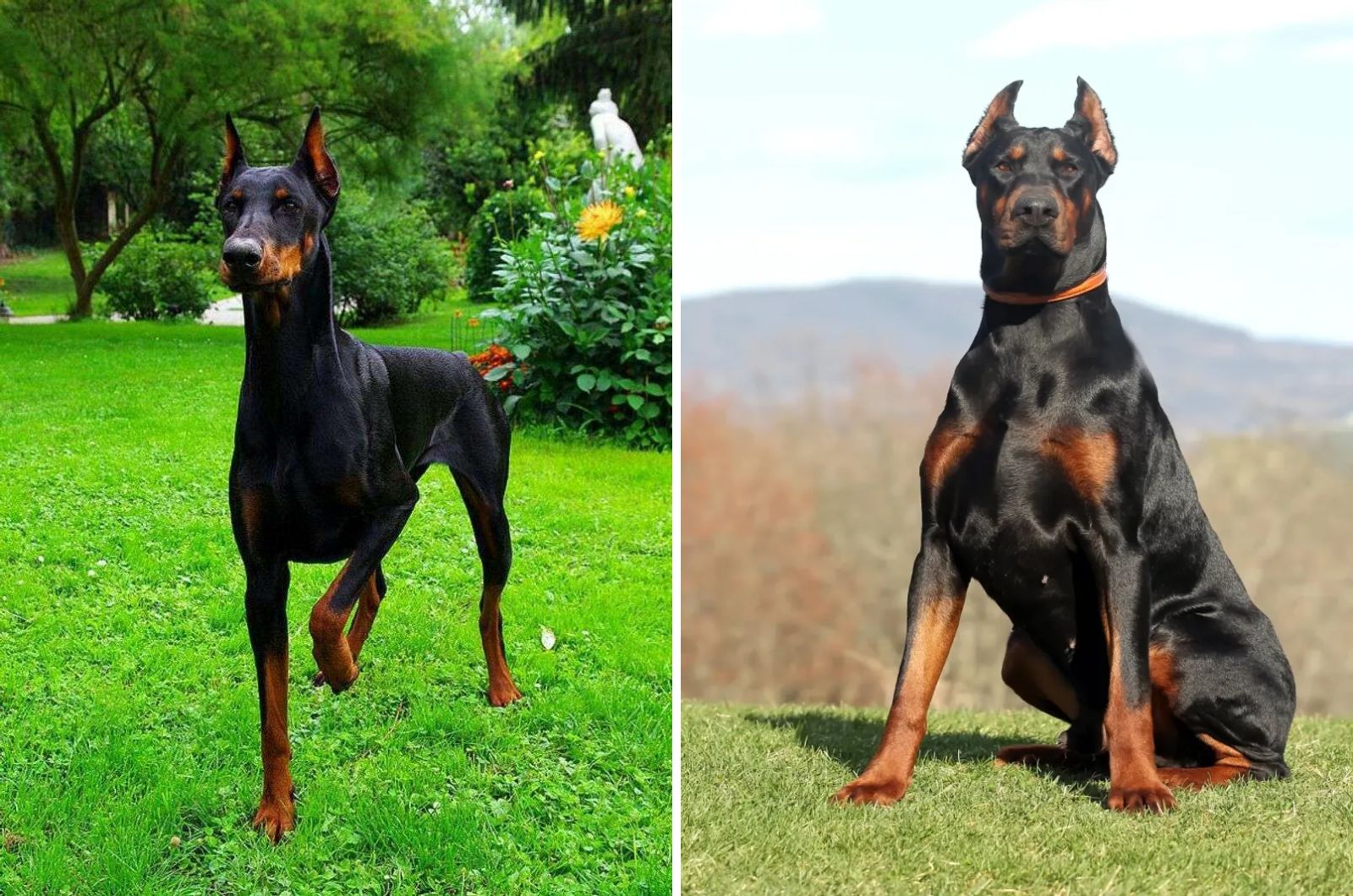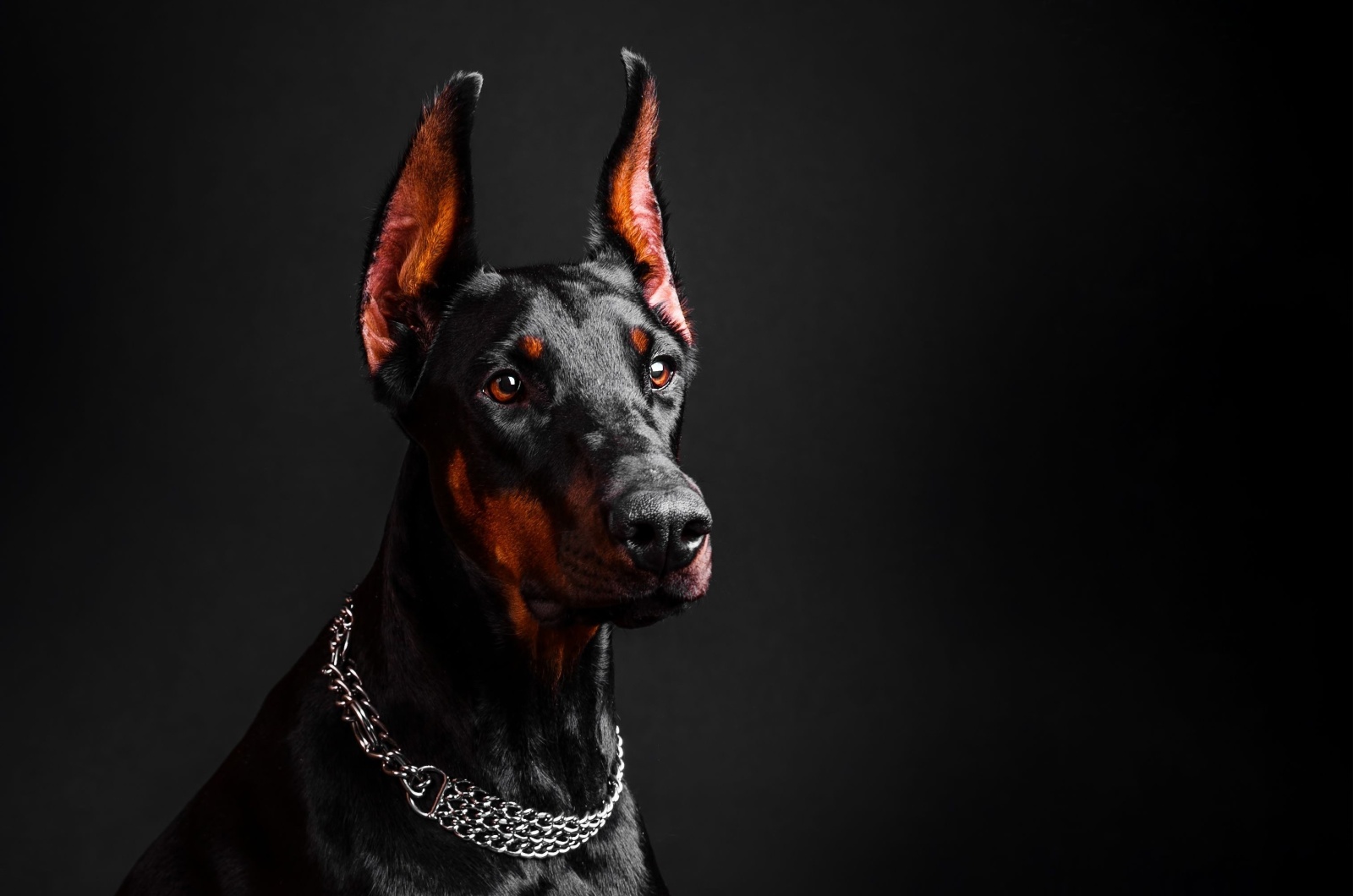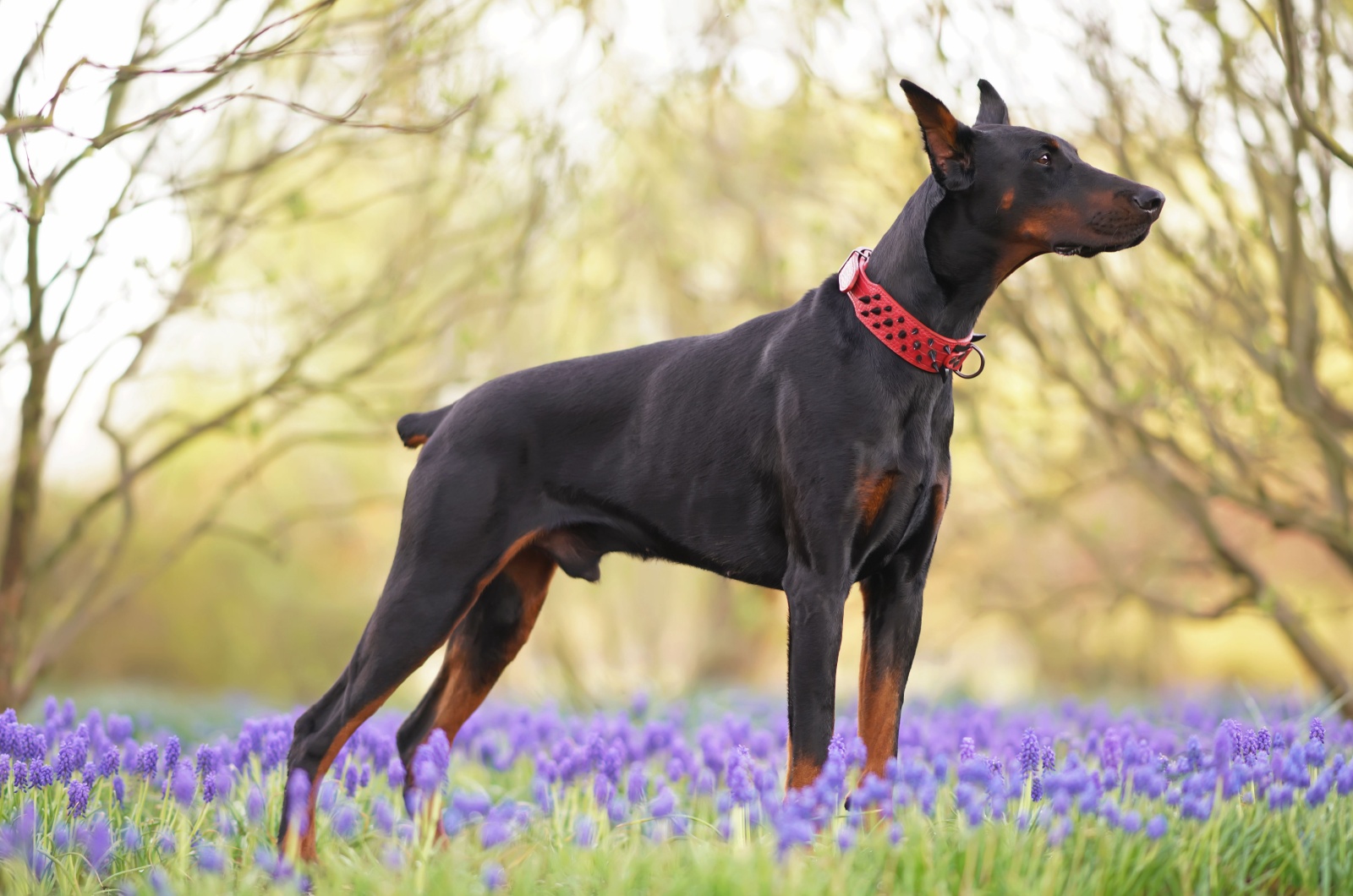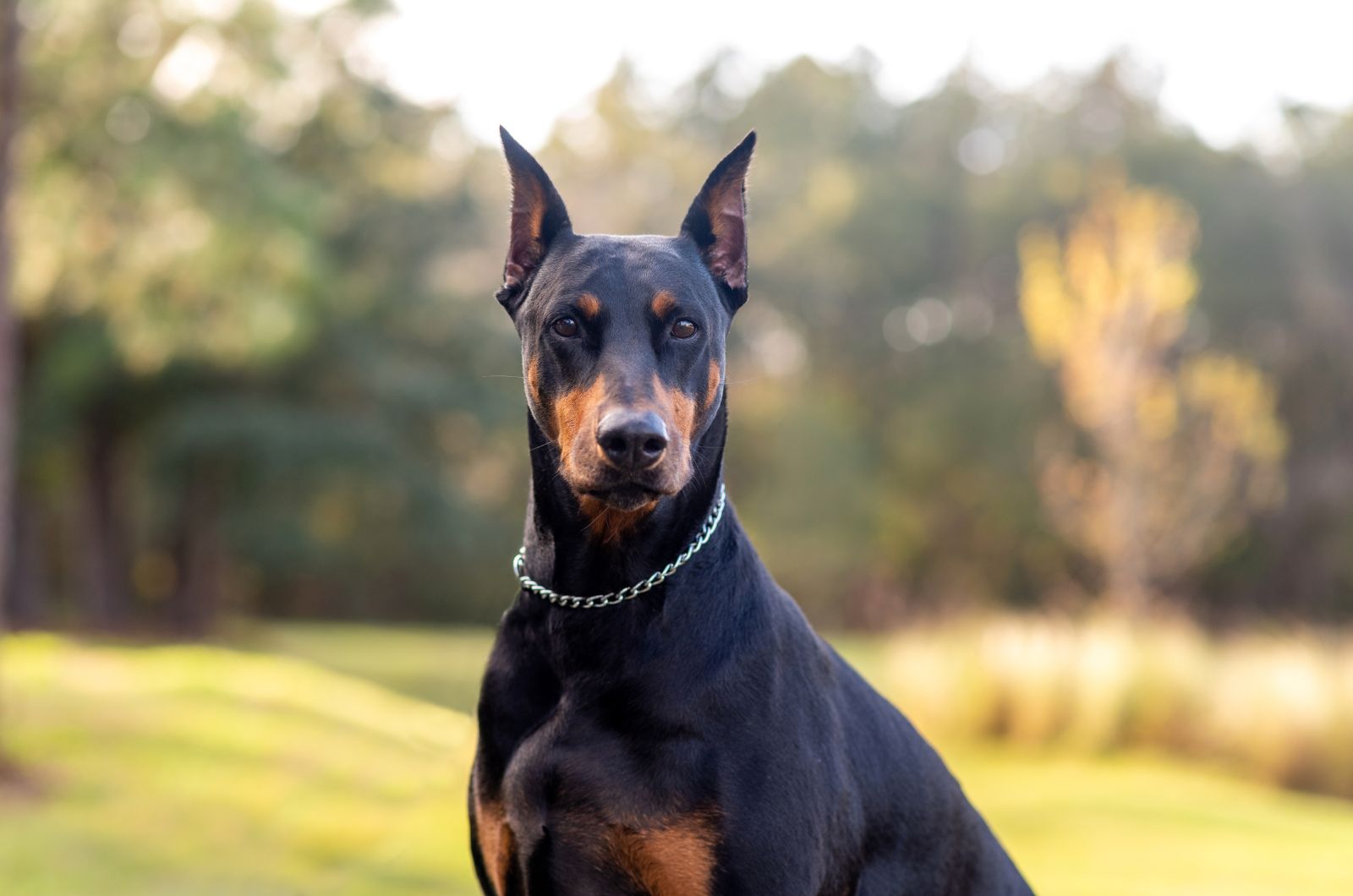12 Defining Traits That Set American And European Dobermans Apart

American and European Dobermans share a proud heritage, but their differences go beyond geography.
These 12 defining traits highlight how each type varies in appearance, temperament, and purpose, revealing unique qualities that set them apart.
Whether you’re a Doberman enthusiast or curious newcomer, this guide will deepen your understanding of both versions.
1. Physical Differences

The most obvious way to tell American and European Dobermans apart is their physical build. While individual dogs vary, breed standards from the American Kennel Club (AKC) and Fédération Cynologique Internationale (FCI) highlight key differences.
The American Doberman is sleek and athletic, built for show and competitions. It has a long, slim body, narrow, wedge-shaped head, and a graceful, arched neck. Males stand 26–28 inches tall, weighing 75–100 lbs; females are slightly smaller.
In contrast, the European Doberman is larger and more compact, bred for working and protection. It features a thicker bone structure, muscular legs, a block-shaped head with a blunt muzzle, and a shorter, thicker neck. Males weigh at least 88 lbs, females 71 lbs or more.
2. Differences In Color

Credit: Shutterstock
All Dobermans have a short, sleek coat that sheds minimally. Color differences between American and European Dobermans are subtle but noticeable when standing side by side.
American Dobermans show more color variety, including black and rust, blue and rust, red and rust, and Isabella (fawn) and rust. Their rust markings are lighter and sharply defined, often accompanied by a small white chest patch allowed by the AKC. Eye color tends to be lighter brown but varies.
European Dobermans, per FCI standards, only come in black and rust or red and rust. Their rust markings are darker, and white chest patches aren’t permitted. They generally have darker brown eyes.
Unofficial colors like white exist but aren’t recognized by the AKC or FCI, meaning those dogs can’t be registered or bred officially, though they may still be purebred.
3. Differences In Temperament

Credit: Shutterstock
American and European Dobermans share many traits: intelligence, loyalty, protectiveness, and strong bonds with their family pack. Both thrive in active homes and are easy to train, but key differences set them apart.
The American Doberman is calmer and less driven, making it a great fit for most owners, especially beginners. They’re affectionate, sensitive to emotions, and eager to please, often seeking close contact with their owners. They’re cautious in new situations but fiercely protective when needed.
European Dobermans are bred as working dogs with higher drive and determination. They require more exercise, prefer personal space, and need firmer training due to their stubborn streak.
Unfazed by chaotic environments, they respond to threats with strong physical defense. This makes them excellent guard dogs, but can be challenging for first-time owners.
4. Difference In Health

Credit: Shutterstock
It was once believed European Dobermans were healthier, but recent studies show rising health issues, especially with DCM (enlarged heart), which affects about 58% of them.
American Dobermans benefit from more common and affordable health testing in the U.S., allowing breeders to screen for genetic problems regularly. Studies indicate Americans are less prone to DCM than Europeans.
Both types share many genetic risks, but European Dobermans face higher DCM rates and less widespread genetic testing, making health concerns more challenging to manage.
5. Price Differences

Credit: Shutterstock
Doberman prices vary based on bloodline, breeder reputation, genetic testing, and whether the puppy is bred for show or as a pet. Ear cropping and tail docking can also affect cost where legal.
In the U.S., American Dobermans typically cost between $1,500 for pet quality and $2,500 for show quality, with little difference aside from conformation potential.
European Dobermans are rarer in the U.S., priced between $2,500 and $3,500. In Europe, prices are lower—usually $500 to $2,000—depending on quality. Some Eastern European countries offer even more affordable options.
Many buyers import European Dobermans, but beware: lower-priced imports may be dogs less desirable to European breeders who keep top-quality lines at home. Shipping costs can add $250 to $800.
6. Differences In Breeding Regulations

Credit: Shutterstock
Breeding rules for Dobermans differ greatly between America and Europe.
In the U.S., breeding is largely unregulated. Anyone can breed Dobermans as long as the parents are AKC-registered, and puppies can be registered easily without inspections or tests.
In Europe, strict laws require Dobermans to pass tests like the ZTP, which evaluates temperament, confidence, and protective instincts before breeding is allowed. Success in working dog trials such as IPO or Schutzhund is also valued.
European breeding focuses more on working ability than show conformation, ensuring well-rounded, capable dogs.
7. Working Ability

Credit: Shutterstock
American Dobermans are bred mainly for companionship, shows, and family life. They have a calmer temperament and excel in obedience, agility, and therapy work but lack the high drive and stamina for demanding tasks.
European Dobermans are bred for working roles like protection, police, and military work. Highly driven and physically strong, they thrive in challenging environments requiring focus and discipline.
While American Dobermans suit family life, European Dobermans need more mental stimulation and exercise due to their intense work ethic and protective instincts.
8. Guarding Instinct

Credit: Shutterstock
American Dobermans are naturally protective but tend to be more family-oriented, friendly, and approachable. Loyal and alert, they act more as watchdogs—alerting owners to threats rather than confronting them aggressively.
Their balanced temperament makes them easier to handle around strangers while still guarding their home when needed.
European Dobermans have a stronger, more intense guarding instinct rooted in their history as police and military dogs.
Fiercely territorial and highly protective, they actively confront threats and remain cautious or reserved around strangers. Proper socialization is essential to manage their serious, focused nature and prevent over-aggression.
This makes European Dobermans ideal for demanding security roles, while American Dobermans suit families seeking loyal yet approachable guardians.
9. Ear Cropping Standards

Credit: Shutterstock
American Dobermans typically have longer, elegantly cropped ears that highlight their sleek, refined head shape. This style aligns with the American Kennel Club (AKC) show standards, emphasizing a polished and regal appearance favored in the U.S.
In contrast, European Dobermans have shorter, more practical ear crops designed with function in mind.
The Fédération Cynologique Internationale (FCI) standards prefer a crop that suits their broader heads and robust build, reflecting the breed’s focus on protection and performance rather than aesthetics. This practical cropping supports their working roles, prioritizing durability and safety over style.
10. Tail Docking Standards

Credit: Shutterstock
Tail docking also differs between American and European Dobermans, highlighting their distinct purposes.
American Dobermans usually have slightly longer tail docks, complementing their slim, elegant build and fitting AKC show preferences for a balanced, refined appearance.
European Dobermans feature shorter tail docks, often trimmed to the first or second vertebra. This practical style reduces injury risk during active work and aligns with the Fédération Cynologique Internationale (FCI) focus on functionality and durability.
11. Training Styles And Methods

Training approaches for American and European Dobermans often reflect their differing temperaments and purposes.
American Dobermans generally respond well to positive reinforcement and gentle guidance, thriving in environments that emphasize companionship and obedience.
In contrast, European Dobermans may require firmer, more disciplined training methods to match their higher drive and working instincts, ensuring they stay focused and well-controlled in demanding roles.
Understanding these differences helps owners tailor training to each Doberman’s unique needs.
12. Legal Restrictions Or Breed-Specific Legislation

Dobermans face varying legal restrictions depending on the region, with some countries imposing breed-specific legislation (BSL) due to concerns about aggression or size.
European countries often have stricter rules regulating ownership, breeding, and sometimes even mandatory training or certification.
In contrast, many areas in the U.S. have fewer or no breed-specific laws, though regulations can still vary by city or state.
Awareness of these laws is crucial for potential owners to ensure compliance and responsible Doberman care.






